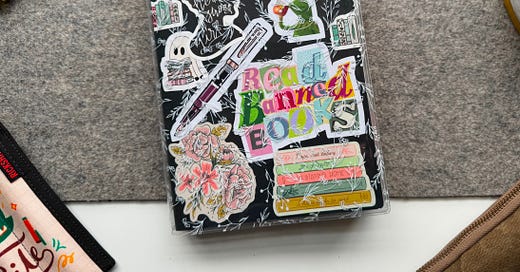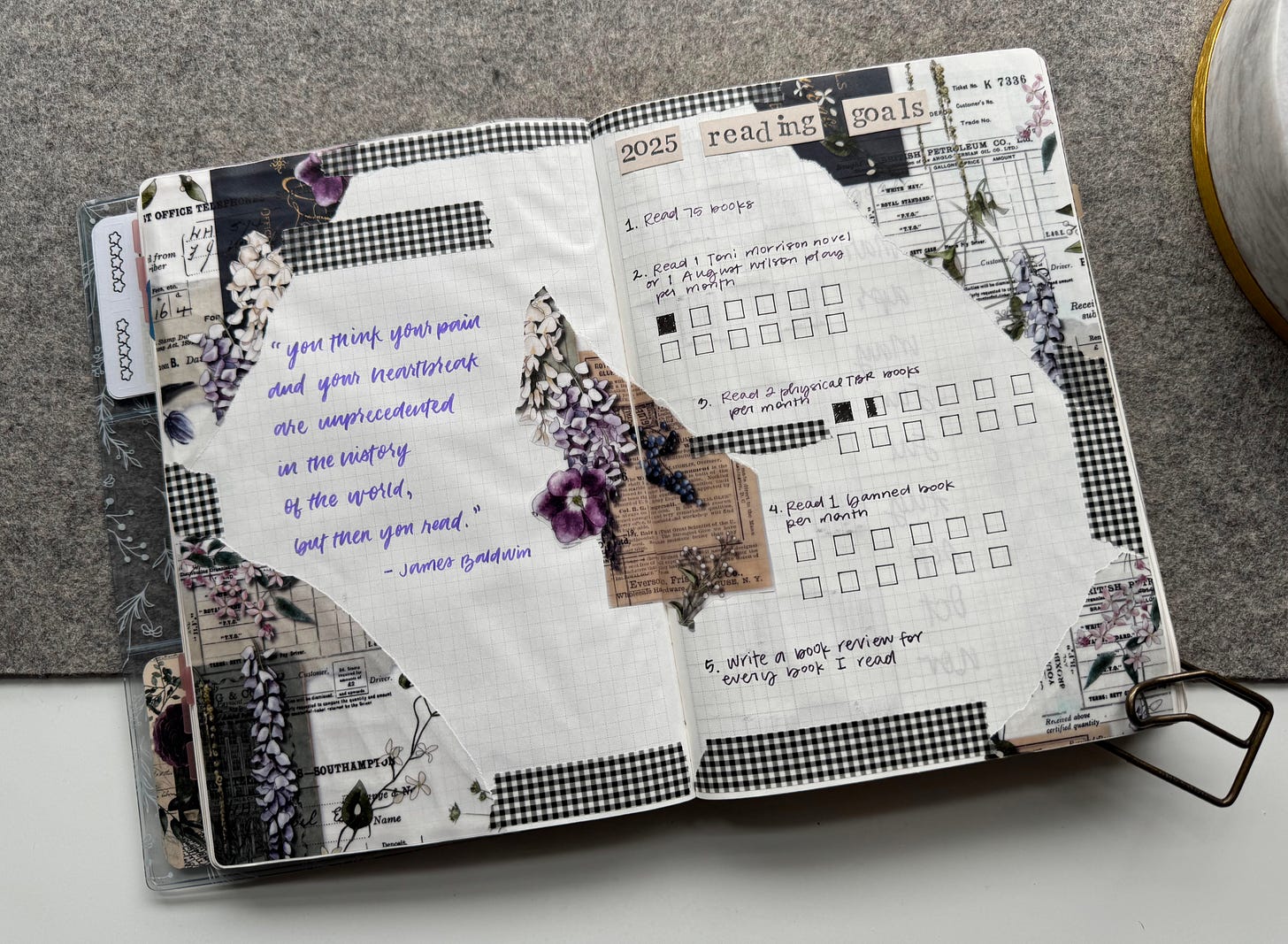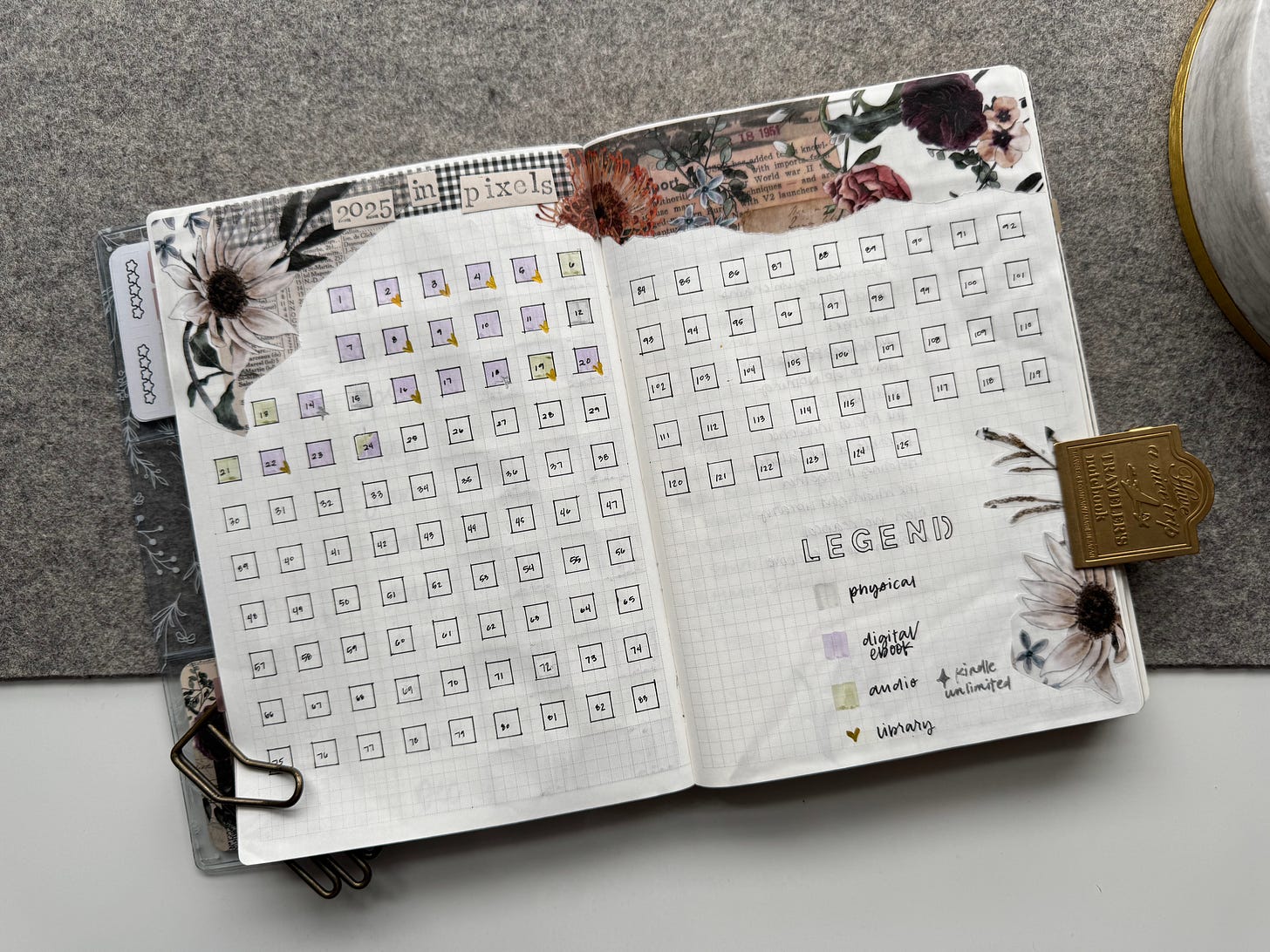Reader Life No. 2: How I track my reading
The digital and analog tools I use to track my reading
In this post:
How and why I track my reading
What reading data I track
My favorite reading tracking and book journaling tools
Over the last two years, I’ve gotten really into tracking my reading. To the point where I almost consider it a separate hobby. So, today I’m sharing how and why I track my reading, what reading data I track, and my favorite digital and analog tools.
Why I track my reading
I’ve spent most of my 30s unlearning an “always optimizing” orientation to life— one I internalized in my early 20s. It was that mindset that nearly killed my love for reading. I convinced myself that an optimal reading life was one that supported my professional goals—which is how I found myself reading only books relevant for my work in education policy. I share this because it is important to me that reading tracking isn’t done for the purpose of optimization. I’m intense about reading tracking because I enjoy reading tracking. I encourage anyone considering reading tracking to consider your why before diving in.
Besides enjoyment, here are a few more reasons why I love tracking my reading:
For better or worse, I am very goal motivated. Setting slightly ambitious reading goals and tracking my progress against those goals keeps me reading. The dopamine hits I get from updating all my reading trackers are an added bonus.
I love stationery and journaling, but I struggle with creative journaling or junk journaling. Keeping a physical reading journal gives me a reason to play with my favorite stationery on a regular basis. My reading journal is one of my primary creative outlets.
I love physical artifacts. By keeping a reading journal, I am creating a beautiful physical artifact that captures my voracious reading life (which is a big part of my identity). Flipping through my reading journal brings me joy. I love to imagine flipping through all my reading journals years from now with my son. Also, I do not trust big tech. I live in fear that the digital reading tools I rely on will go away one day because some tech billionaire no longer finds them profitable.
I’m a data and stats nerd. I love a good graph. I find data entry relaxing. I love that I’m creating my own personal book and author databases that I can look back on—and use to analyze trends in my reading!
How I track my reading
I use three tools to track my reading— StoryGraph, Notion, and a physical reading journal. Is this excessive? Yes. Do I enjoy my excessive reading tracking? Also, yes.
StoryGraph is a platform conceptually similar to Goodreads, though far superior and Black woman owned! I keep StoryGraph up-to-date in almost real time. I update it as soon as I start or finish a book. StoryGraph offers far more functionality than Goodreads— including lots of built-in data visualizations (see below for an example of StoryGraph’s monthly reading wrap-ups). StoryGraph isn’t as social as Goodreads, but it has some cool built in functionality— including the ability to join community reading challenges and read alongs (both of which are fun ways to engage with other readers on the internet).
I also track my reading in Notion. (If you are unfamiliar with Notion, it is an all-in-one productivity workspace that’s extremely flexible to different user needs. YouTube is awash with Notion tutorials if you’re curious.) I use Notion for more extensive data tracking and analysis. I have two linked databases in Notion— a book database and an author database. I use these databases to analyze short- and long- term trends in my reading. For example, I use Notion to track some basic demographic information about authors whose works I’ve read.
Finally, my beloved physical reading journal! I’ve had the same reading journal—an A5 grid notebook from Sterling Ink (520 pages)— since 2023. At the beginning of each year I set up several trackers and collections. I update my reading journal once per month (using Notion as a reference)— a process that includes updating my trackers and collections and adding a monthly reading summary. I add new trackers and collections throughout the year as I get inspired. Though, I do not write book reviews in my reading journal. I keep reading notes in my planner and on my phone, which I reference when I write my monthly reading recaps for my Substack.
I recently filmed a flip through of how I set up my reading journal for 2025, which you can watch here:
What reading data I track
StoryGraph is where I track core reading information, including:
Date started and finished a book,
Format (digital, audio, physical, or mixed-media),
My ever-growing TBR,
Total number of pages read per month and per year,
Genres read,
Star ratings,
Reading challenges— this year, I’ve joined Book Riot’s 2025 Read Harder Challenge, the #ReadLatineLit challenge hosted by
, and the 20 books by Black women challenge hosted by @melanatedreader.
In Notion, I track the same information captured in StoryGraph, plus:
Publisher (I’m trying to read more from outside the Big 5 publishers, and unless I track it, I won’t know!),
Audience (Adult, YA, Middle Grade),
Author demographics — including gender, racial/ethnic identity, LGBTQ+, neurodivergent, mental illness, and/or disability representation. (Note, I very intentionally try not to be creepy about this. I only include info that is very clearly stated in an author’s bio).
In my reading journal, I record most of the information collected in StoryGraph and Notion, plus:
Upcoming releases I’m excited about,
Favorite quotes about reading,
Favorite quotes from books I’ve read,
Reading projects— I want to re-read all of Jane Austen’s novels. I want to read the entire backlists of Toni Morrison, August Wilson, and Octavia E. Butler. I want to read more banned books. I am keeping track of my progress on these reading projects in my reading journal,
Series tracker— As a notorious series non-finisher, I set up a tracker to remind myself of the various book series I’ve yet to complete,
Local bookstores I visit,
Annual book bracket— my non-scientific approach to picking my favorite book of the year.
Final thoughts
Reading tracking has also enhanced my enjoyment of reading. By closely tracking my reading, I have a better understanding of my reading tastes and moods. I think more creatively and realistically about reading goals. And I am better able to identify areas for growth in my reading life. For example, mid- last year I realized I’d read very few romance novels from Latine authors—something I immediately corrected for, which led me to discover some of my favorite romance novels of the year.
In hindsight, of course this book and stationery lover, and data nerd would get really into reading tracking. My only regret is not discovering my love for reading tracking sooner!
Tell me your thoughts on reading tracking!
Do you track your reading? If yes, how so?
What do you track about your reading?
If you have documented your reading journal or digital reading journal setup anywhere on the internet, please drop those links below!







i love tracking my reading! my physical reading journal & storygraph is what i use consistently, but i’m still finding a notion system that works best for me
Love reading this and thank you for participating/shouting out the #ReadLatinLit challenge! <3